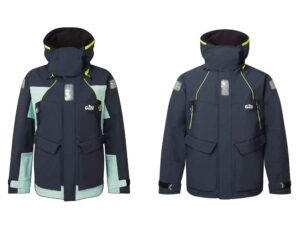
LightwireSt
It’s a magical thing when you stumble across a product that truly enhances your everyday life. That is certainly the case with the Patagonia Lightwire backpack. When I ordered it, I thought I was being a bit extravagant. I have plenty of backpacks, and I also have a soft-sided briefcase that I used to take my computer on the road.But I knew that I’d be on the move quite a bit during my time in Valencia, Spain, covering the America’s Cup, often on a bike, and a backpack that could safely carry my computer would be a nice addition. I did quite a number on the iBook I used in Auckland in 2003 and wished to avoid putting as many dents in my new computer.The Lightwire pack isn’t big. The interior volume is 1,350 cu. in. But the pack is organized so well that it carries quite a bit of gear without seeming to get stuffed. The Lightwire eschews the traditional layout of one cavernous main pocket and then one or more smaller pockets. There are two primary pockets, both utilize the full width and height of the pack, and are approximately 2 inches deep. The one closest to your back when you’re wearing the pack contains a padded computer sleeve, which I found to be especially helpful. I could easily extract my computer without disturbing anything else in my pack. It was made going through airport security a relatively painless process.The third pocket occupies the face of the pack and features what Patagonia calls a trapdoor flap. The semi-circular zipper allows for the pocket to be almost completely exposed. This area contains a series of smaller pockets that are perfect for storing business supplies or other little things that are usually swallowed up and lost in less compartmentalized packs.On the outside of the pack are two sturdy mesh sacks that can hold water bottles, an orange, or even a small towel or rolled-up jacket. The wide, padded straps make carrying the load as comfortable as possible and the “highly breathable 3-D spacer-mesh back panel” does a better than average job of keeping your back cool and dry, though even it was no match for my 20-minute bike to work in the Valencian heat.I’ve traditionally favored the more open pack design, figuring the extra weight of compartments was just that, extra weight. The Lightwire pack turned my opinion around. The slim compartments helped keep things from sinking to the bottom, so the pack maintained a slim profile, even when loaded. It also enabled me to get out just what I needed, when I needed, without having the dig through the entire pack. Though I did, on occasion, find myself pawing through multiple pockets to locate exactly what I needed.The only drawback to this design is that it doesn’t handle bulky items very well. My digital camera, which is approximately 4 inches square, was hard to place in the pack. But virtually everything else I needed to fit in there, I did.While this pack is best suited to active commuters, or computer-laden travelers, it has the necessary features to do short day hikes. There is a sternum strap and a waist strap that tucks neatly away when not in use. The computer pouch can hold a water reservoir and the tube can be run from the pack through the top of the straps. In case you get completely lost, or just want to annoy the heck out of anyone within 100 feet, the buckle for the sternum strap doubles as a piercing whistle.The Lightwire Pack retails for $105 at Patagonia.com, there’s also a smaller version called the Pocketwire pack for $50, and a Lightwire tote for $90. www.patagonia.com









